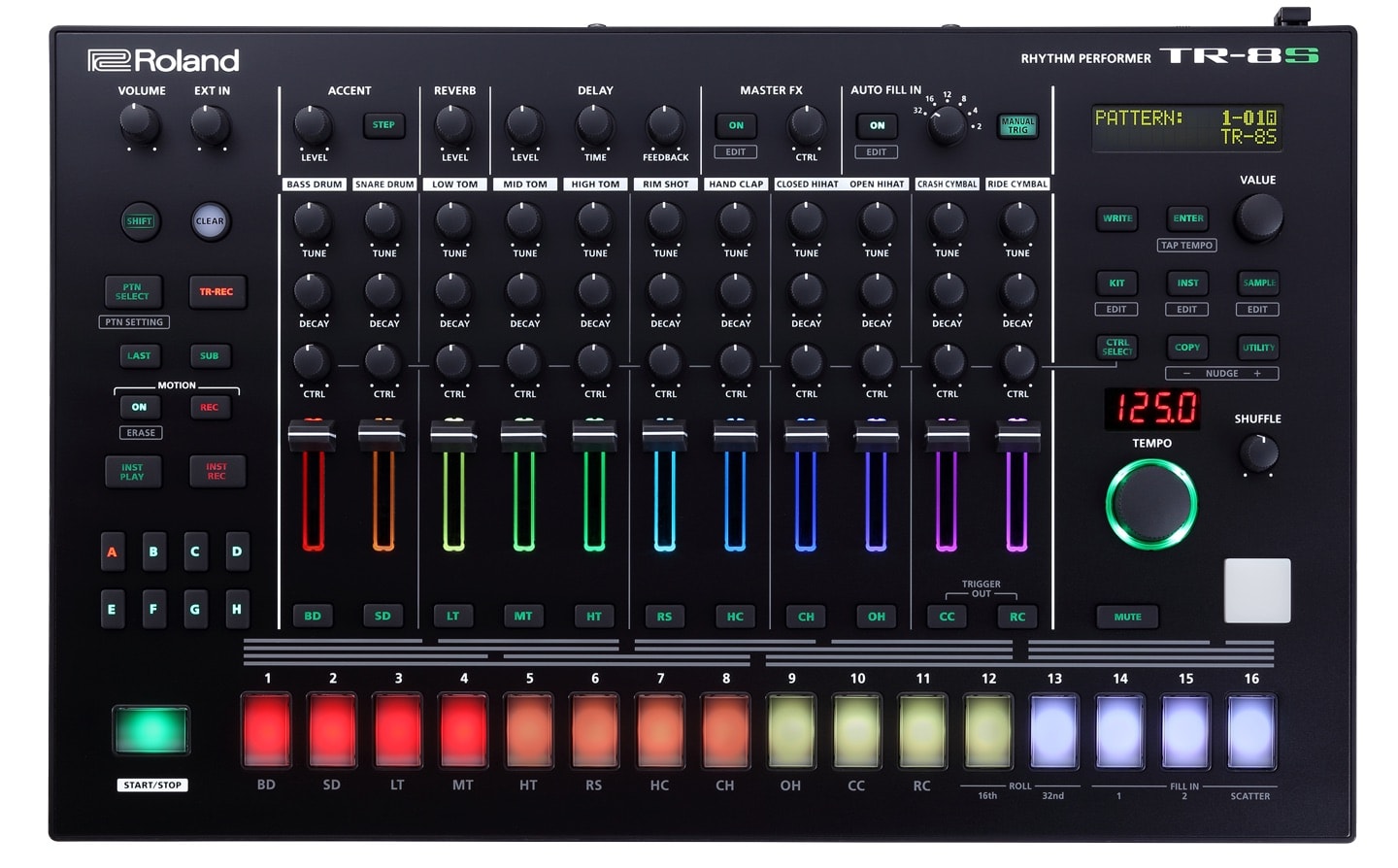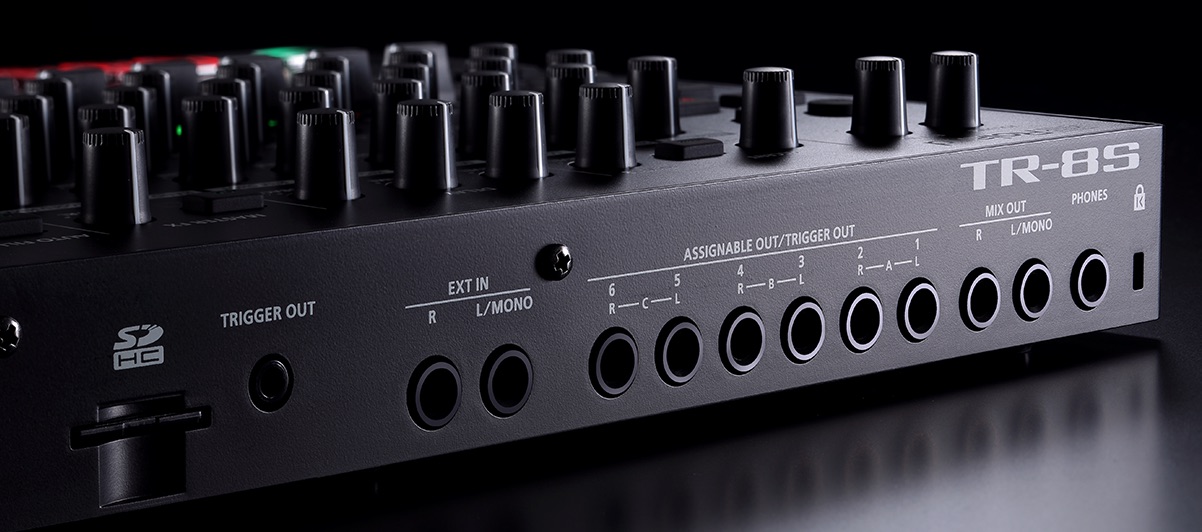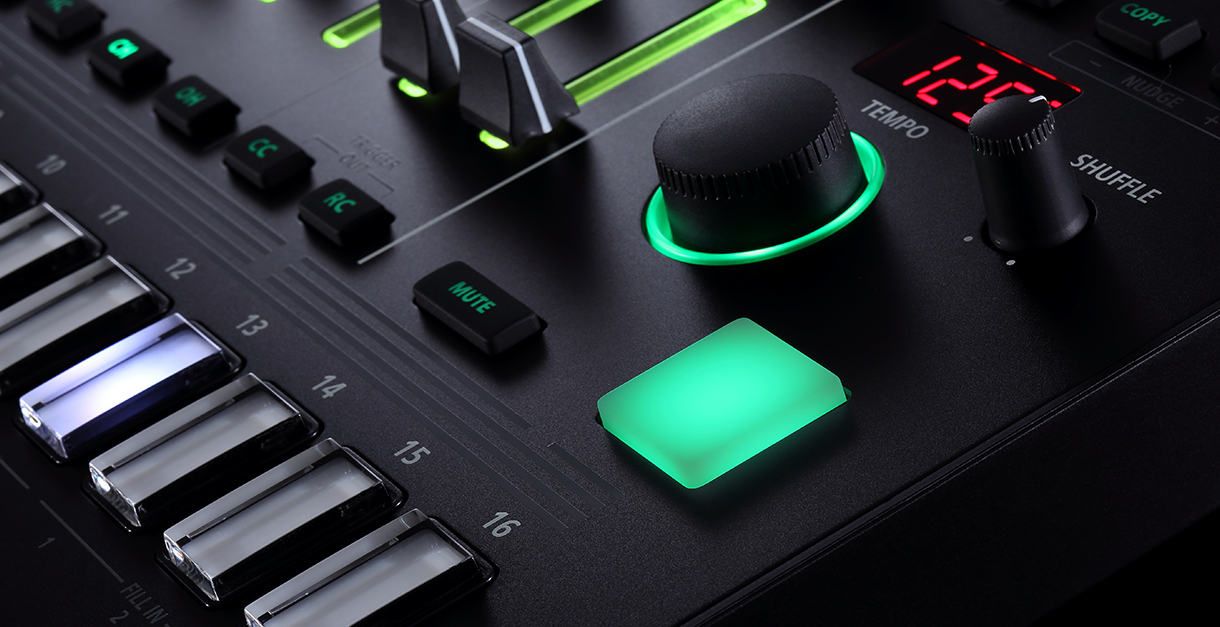What happens when a company listens to customer feedback to build a new version of their product? The Roland AIRA TR-8S could be exactly that. In the a just-announced update to Roland’s flagship drum machine come a number of powerful features, including the ability to upload your own stereo samples from an SD card and output audio along 8 separate channels.
Roland AIRA TR-8S
- Product: AIRA TR-8S
- Manufacturer: Roland
- Price: $699
- Availability: Pre-order in the DJTT store (end of March delivery expected)
 Originally launched in 2014, the TR-8 was a massive hit. It was the first time that Roland took seriously the idea of revisiting their classic drum machine lineup with a modern take on the workflow.
Originally launched in 2014, the TR-8 was a massive hit. It was the first time that Roland took seriously the idea of revisiting their classic drum machine lineup with a modern take on the workflow.
Now four years later, the TR-8S has a number of features that are obvious additions to any power users of the original model. Here’s an overview:
- SD import: The unit still has all the classic 808/909/707/etc samples built-in, but now users can put their own sounds on the sequencer (stereo and mono sounds), and then adjust them on the unit (reverse, delay, start/end points, and pitch adjustments)
- 8 Audio Outputs: Eight different analog outputs on the back of the unit means that it’s easier to patch individual drum sounds through other effects, or pass them into a mixer individually.
- More Hardware FX: Instead of an FX section that was mostly focused around the Scatter knob, the new TR-8S now has more built-in hardware FX, including sidechaining, LFO, compression, and a tape echo
- A single performance pad: Instead of tapping out rhythms live on the TR-REC buttons, Roland has put a single velocity sensitive pad on the unit to play in beats. It’s a clever way to add responsive performance when you’re only ever really playing one instrument at a time. And yes, this means you can record velocity automation per each step.
- Even more patterns: The TR-8S has far more built-in memory, allowing it to hold even more patterns (up to 128 total). There’s also now a full section of control for chaining, copying, and creating variations of patterns.
- Auto-fill: Control on the unit for automatically adding fills at the end of a set of measures – making it easy to create variation in patterns without having to manually trigger fills each time







